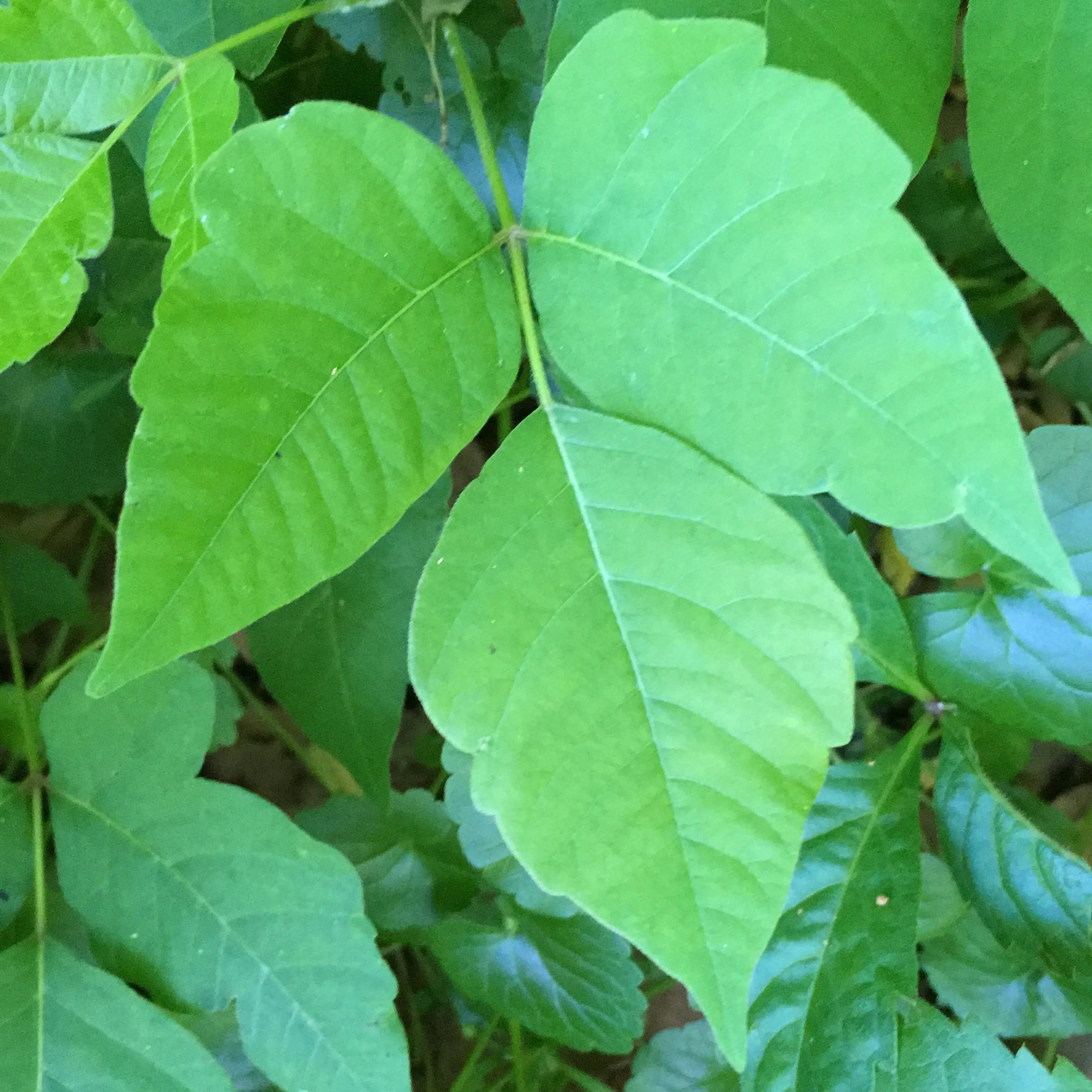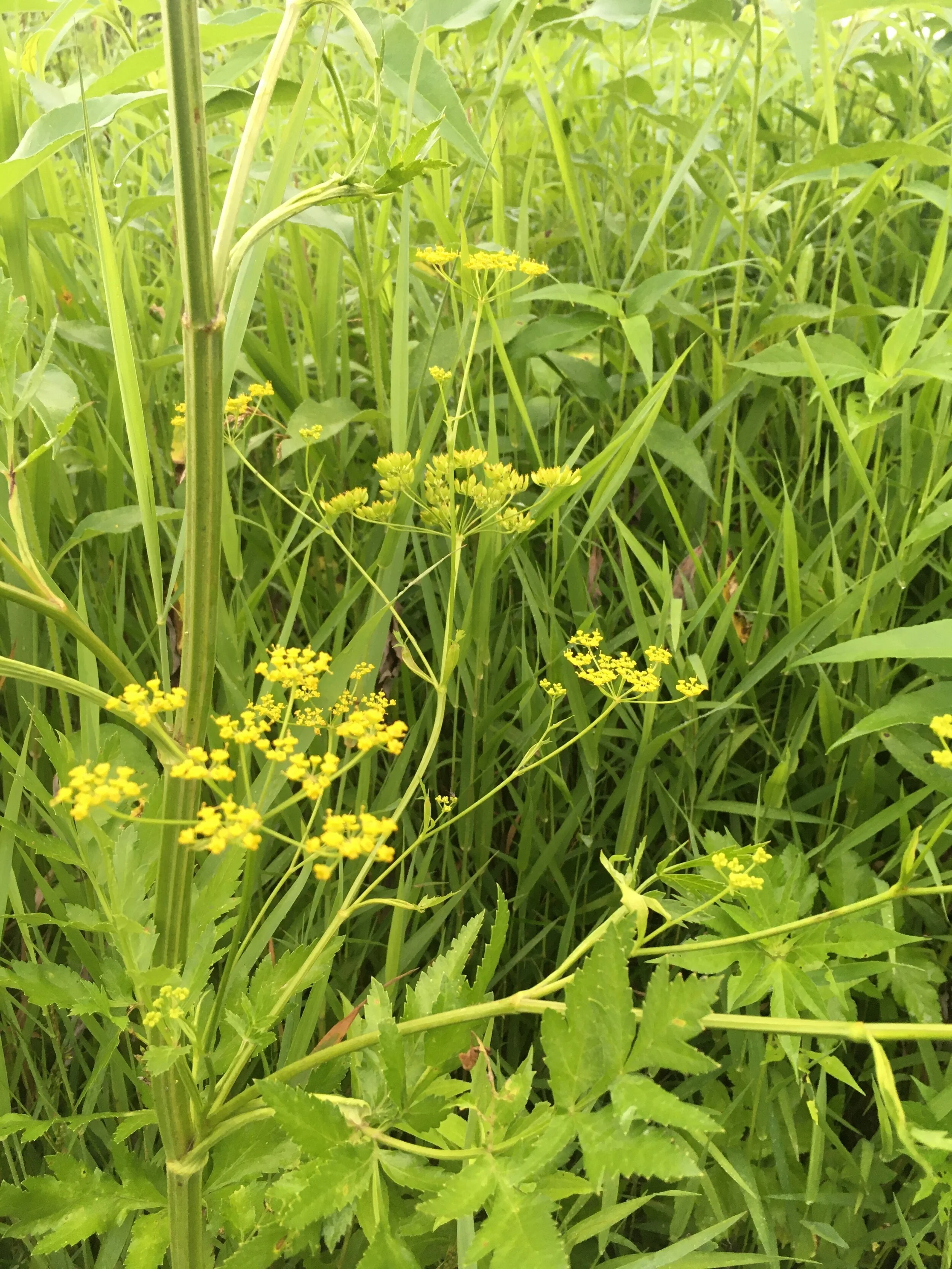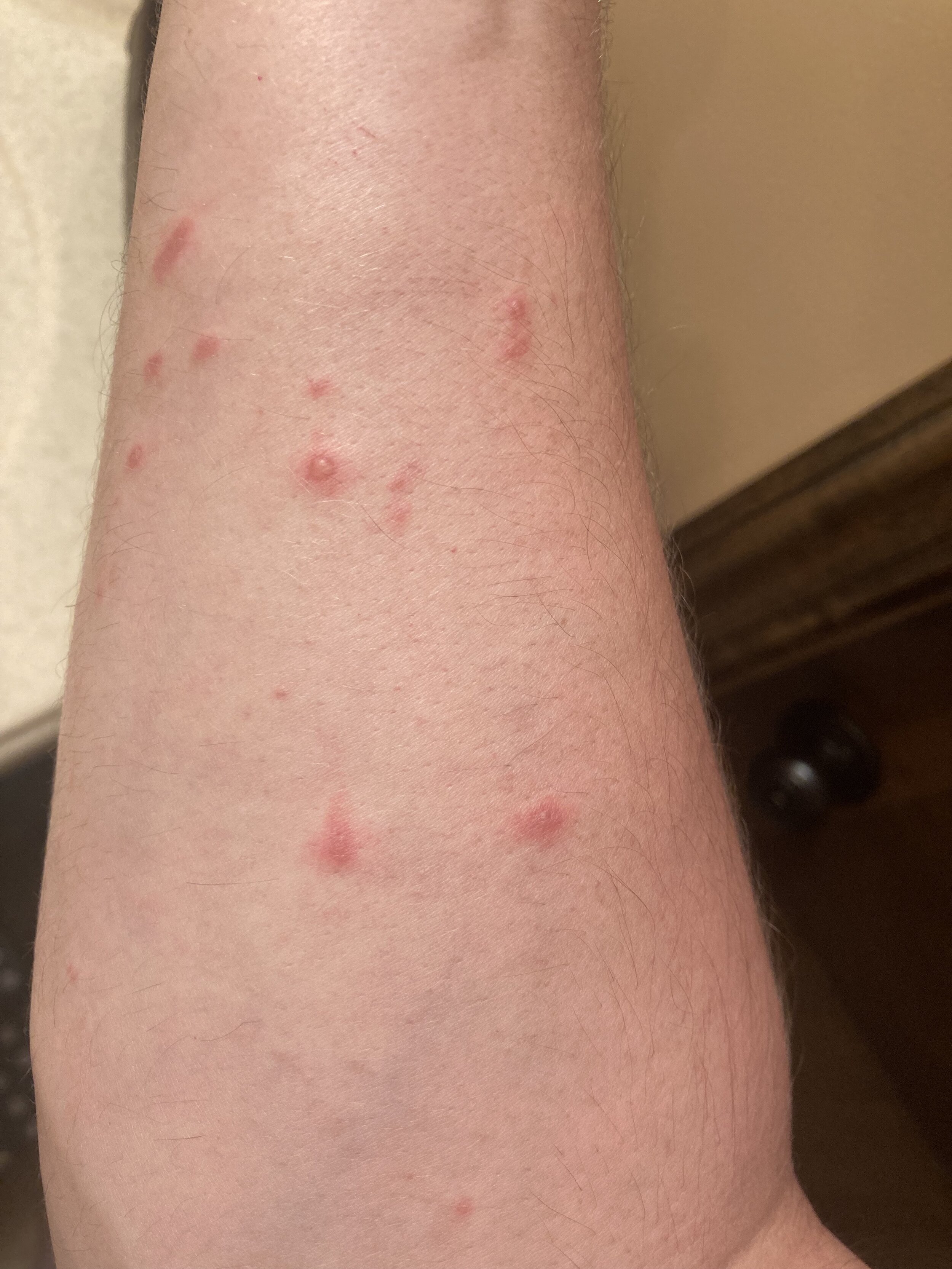Avoiding the Itches, Stings and Burns of Kingdom Plantae
Eastern Poison Ivy
One of the fringe benefits of being a parent of young children is getting to enjoy some of the childhood toys, shows and movies you loved as a kid. One of my all time favorite Pixar movies was Monster’s Inc. Thankfully my son loves the movie so I’ve already been able to indulge, er I mean play the film for him multiple times. In the movie I have three favorite scenes- 1) When Mike Wazowski gets his fingers chomped on by the buck-toothed, monster toddler. 2) When Mike Wazowski slams the door on Randall’s (the villain) face, and 3) when the Abominable Snowman is monologuing about his friend Bigfoot wearing poison ivy on his head and referring to himself as “King Itchy.”
Ever since hearing that line from the Abominable Snowman, I play that scene in my mind every time I am at risk of having a run in with poison ivy and I carefully scan my surroundings to best avoid an unfortunate run in with the nefarious nuisance. Although poison ivy gets most of the attention, there are several other species of plants that you may run into during your summer scouting that could absolutely ruin your day… or week.
Let’s start with the aforementioned: According to the Centers for Disease Control and Prevention (CDC), Poison Ivy is found in every state except Alaska and Hawaii, and it grows pretty much wherever plants will grow (CDC, 2018). Yeah, it’s everywhere. Because of this incredible prevalence we have to learn to live with the stuff. My best recommendation for avoiding the noxious plant is by educating yourself on basic plant recognition. The best way I suggest doing this is by spending time online looking up pictures of poison ivy and burning the image into your long term memory. You may have heard the old rhyme “leaves of three, leave them be.” This is a good starting point, but you also will want to memorize the shape of the leaves. These are the two characteristics I keep an eye out for so that each time I am in the deer woods- especially during the summer.
Don’t get caught without relief from the allergy inducing effects of poisonous plants. Grab a MyFak Large First Aid kit from My Medic and have access to antihistamines, bandages, and other wound care supplies. Use the My Medic Promo Code firstgen15 to save 15% at checkout!
Poison Oak
Photo by James Whitney on Unsplash
Another nasty plant that will make you loathe the date of your careless tromp through the summer woods is poison oak. Poison oak also abides by the “leaves of three” rule, and has the recognizable feature of looking like small, oak tree leaves. Thankfully this plant is not as rampant as poison ivy, but is still found in many states in the South East and parts of the Midwest (CDC, 2018).
For all of you Eastern hunters, I have some bad news. The CDC tells us you have the additional scourge of poison sumac to look out for (CDC, 2018). I have never knowingly seen poison sumac, so unfortunately I can’t offer much from my own knowledge of the wicked weed other than educating yourself on its appearance is once again the best way to protect yourself from its harmful effects.
Wild Parsnip
An invasive plant that has started to gain some notoriety in recent years is the dreaded poison parsnip, also known as wild parsnip. I have had a couple terrible run-ins with this dastardly flora, and let me tell you, you don’t want any part of it. The sap inside of the stalk-like tissue of this plant begins working its dark magic by breaking down your skin’s ability to defend itself against UV radiation from sunlight- leaving you vulnerable to terrible sunburns (NY Department of Environmental Conservation, Wild Parsnip). This means if you’ve come in contact with the sap, and you have a day full of activity in the sunlight planned, you will suffer some serious burns. You will eventually develop dozens of water blisters all over the affected areas. These of course pop quite easily leaving you with patches of raw, exposed dermis which stings as bad as you think it would… for a few days. Again, just like poison ivy, learn to identify this plant and you can pretty easily avoid it. Just about the worst thing you can do with poison parsnip is hit it with the lawn mower, or worse yet, the weed whip. This will send droplets of the sap virtually everywhere in close proximity of the plant and you may find yourself in need of a visit to the Emergency Room.
One final nightmarish plant that all hunters (sorry Eastern hunters, this doesn’t get any easier for you) need to keep an eye out for is the invasive giant hogweed plant- a plant of unrivaled sadistic treachery. The giant hogweed is a nonnative plant that has recently begun spreading west from eastern states (not native to eastern states either, just where it showed up first). Giant hogweed has made the news in the past by causing terrible UV radiation burns when its sap reached exposed skin on a few unlucky folks. Just as the chemical agent in the poison parsnip sap damages the skin’s ability to protect agains UV radiation burns, giant hogweed sap will do the same (NY State Department of Health, 2015). However, this plant is known to be capable of causing more severe burns than poison parsnip, and even blindness by the sap being unintentionally rubbed into the eyes. The good news is it is very easy to identify. Whoever assigned this plant the descriptive term of “giant” wasn’t fooling around. In fact they probably could have used “biggest stinkin’ plant in the whole field hogweed” for its common name. Anyway, the plant is quite large and has a stalk-like stem and looks similar to poison parsnip, but with white flowers instead of yellow, and obviously much larger. The flowers also form a rounded outline, or silhouette to the top of the plant as opposed to the flat top of poison parsnip. Again, I strongly recommend you do some research on this plant in order to prevent serious injury to yourself from an unfortunate run in. Also be sure to let your local conservation officer know about any sightings as stopping its western expansion is of utmost importance.
A mild case of wild parsnip burns.
This isn’t an exhaustive list of all plants that can make you uncomfortable during your summer prep-work. Stinging nettles, and all varieties of thorny plants can also make your day a little tougher, but they most likely won’t give you as much trouble as the week-ruining flora discussed within this list. So, when you are hanging trail cameras, trimming shooting lanes or hanging a new stand in the summer heat, be sure you are studied up on your poisonous plants to avoid earning the nickname “King Itchy.”
Article Sources
Centers for Disease Control and Prevention, NIOSH. (2018, June 01). Poisonous Plants - Geographic Distribution. Retrieved June 27, 2020, from https://www.cdc.gov/niosh/topics/plants/geographic.html
New York Department of Environmental Conservation, N. (n.d.). Wild Parsnip. Retrieved June 26, 2020, from https://ocgov.net//oneida/sites/default/files/health/EnvHealth/General/wildparsnip%20fact.pdf
New York State Department of Health, (2015, July). Giant Hogweed - Health Advice. Retrieved June 27, 2020, from https://www.health.ny.gov/environmental/outdoors/hogweed/giant_hogweed.htm




